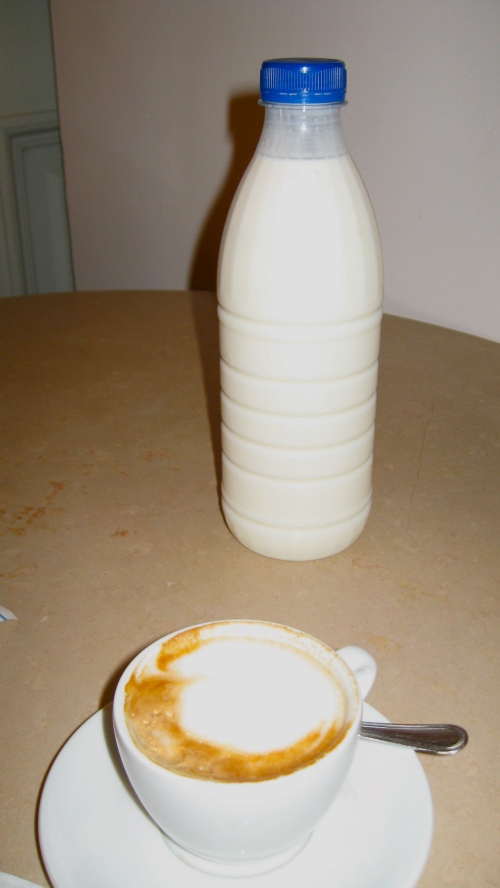We’re so coddled here, with the wonderful food prepared for and served to us at the Academy. So it was with real satisfaction last night that I prepared a meal requiring what felt like authentic labor: beheading fish and whisking for a good half hour.
The meal was utterly simple, and maybe that’s why it was so much fun to make. I started in the morning at the open air market on Via Nicolini, where I bought a pile of fresh sardines. The fishmonger threw in a handful of parsley too, which is one of the nice gestures these Roman vendors always make. It’s both generous and bossy of them: “here, have some herbs” and “if you’re going to cook that, you really should have this.” (This attitude actually seems to be a regional—or even national—trait.) I bought lemons at another stall, mixed chicories at another, some apples, brocoletti, and then some pizza bianca at Pasticceria Beti.
Here are the fish, before their “dressing”:
There are a few ways to prepare sardines—going from minimally to maximally meticulous. I chose the middle road. The minimal would be just to clean the scales off and cook them whole. The most thorough would be to cut the heads off, clean the guts out, and bone them before cooking. The middle way, which Robinson Crusoe would have advised, is to break the heads off with your hands; the attached guts follow; and the boning is easier to do when the fish are cooked anyway.
Sardines are very nutritious, as they are rich in omega-3 fatty acids and low in the mercury and other contaminants that settle in the big fish higher up on the food chain. They are very high in selenium and vitamin B12 and high in calcium, niacin, and phosphorus. Are these good reasons to feel virtuous even when you fry them in butter?
After a good descaling rinse, they’re ready to be dredged in salted flour and fried up in a mixture of butter and olive oil, at high heat.
Before doing that though, I made the aioli with a whisk—and with the assistance of Junior Wells’s Hoo Doo Man Blues, prosecco, and Peter. I followed Alice Waters’s recipe from The Art of Simple Food. Start with garlic and a pinch of salt mashed with a mortar-and-pestle; add a 1/4 tsp. of water and an egg yolk. Starting drop by drop, whisk in 1 c. extra virgin olive oil. (When you’re not working with the help of electricity, this takes a good long time.)
The resulting meal was simple, cheap, yummy, and fun.











 The lettuces made a crisp bed for some eight-minute eggs.
The lettuces made a crisp bed for some eight-minute eggs.





